| Keynote Speaker Ⅰ | |||
|
|
|||
| Bin Li | |||
| Academy of Aerospace Propulsion Technology, China | |||
| Brief Biography: Bin Li, research fellow and doctoral supervisor, member of the "National Ten Thousand Talents Program" (for Science and Technology Innovation Leaders), is currently the Director of the Science and Technology Commission of The China Academy of Aerospace Propulsion Technology. He has been engaged in the technical research of advanced liquid rocket engines for a long time, and led the team successfully developed the 120-ton high-pressure staged-combustion LOX-kerosene engine, which are employed as the main propulsion system for the new generation Long March launch vehicles. At present, Bin Li is committed to tackling key technologies for propulsion system of manned lunar missions and heavy launch vehicles. He has won a first prize of National Science and Technology Progress Award and 15 National Defense Science and Technology Progress Awards, published more than 50 papers and 3 monographs, and was granted with 35 invention patents. He was honored the 4th Aerospace Laureate Awards, the Qian Xuesen Outstanding Contribution Award from China Aerospace Foundation, and other awards. |
|||
| Speech Title: Key Technologies of Advanced Liquid Rocket Engines |
|||
| Abstract: The liquid rocket engine is the core component of launch vehicles and determines the ability to enter space. With the rapid development of large-scale space infrastructure and the aerospace industry, higher requirements are imposed on liquid propulsion technology. This lecture provides a systematic overview of the major research directions of advanced liquid rocket engines. Beginning with an overview of Chinese liquid rocket engines, the speech addresses representative technical characteristics of advanced liquid rocket engines, including rapid dynamic processes, extreme operating environments, high requirements on manufacturing, and difficulties in fault diagnosis. To overcome these challenges, several research directions have been identified. The speech introduces the latest progress in detail and outlines prospects for future advancement, covering the control of system dynamic characteristics, the design of lightweight structures, the control of combustion stability, the design of high-power-density turbopumps, technologies of reusable engines, as well as fault diagnosis and health management. |
|||
| Keynote Speaker Ⅱ | |||
 |
|||
| Wenhui Ling | |||
| The 31st Research Institute of CASIC, China | |||
| Brief Biography: 凌文辉,中国航天科工集团三十一研究所研究员,我国冲压发动机及组合动力领域专家,现任国家重大专项副总师、动力领域原创技术策源地首席科学家。三十余年来持续在科研一线从事该领域的技术研究和工程实践,解决了多型动力难题。获国家科学技术进步二等奖2项、国防技术发明一等奖2项、国防科学技术进步一等奖1项,其他省部级奖6项,授权专利110余项,享受国务院政府特殊津贴,获航空航天月桂奖、钱学森杰出贡献奖、杰出工程师奖等荣誉称号。 |
|||
| Speech Title: 冲压发动机及组合动力研究进展与关键技术 |
|||
| Abstract: 冲压发动机及组合动力是发展空天科技、实现空天飞行的关键核心。冲压发动机及组合动力高度上可跨越航空和临近空间、乃至外层空间,速度上从静止至高超声速、乃至第一宇宙速度,是集航空动力("空")和航天动力("天")特征于一体的推进装置。主要应用于“超/高超声速导弹、临近空间高速飞机、空天飞行器”三大领域。本报告介绍了冲压发动机及组合动力的研究进展,并针对未来空天飞行器对冲压及组合动力提出的更宽域、更高效、更高速、更便捷、更轻质、更可靠的需求,提出了冲压发动机及组合动力“域”、“效”、“热”、“控”、“制”、“测”六方面核心技术挑战与关键技术,最后提出了发展建议。 |
|||
| Keynote Speaker Ⅲ | |||
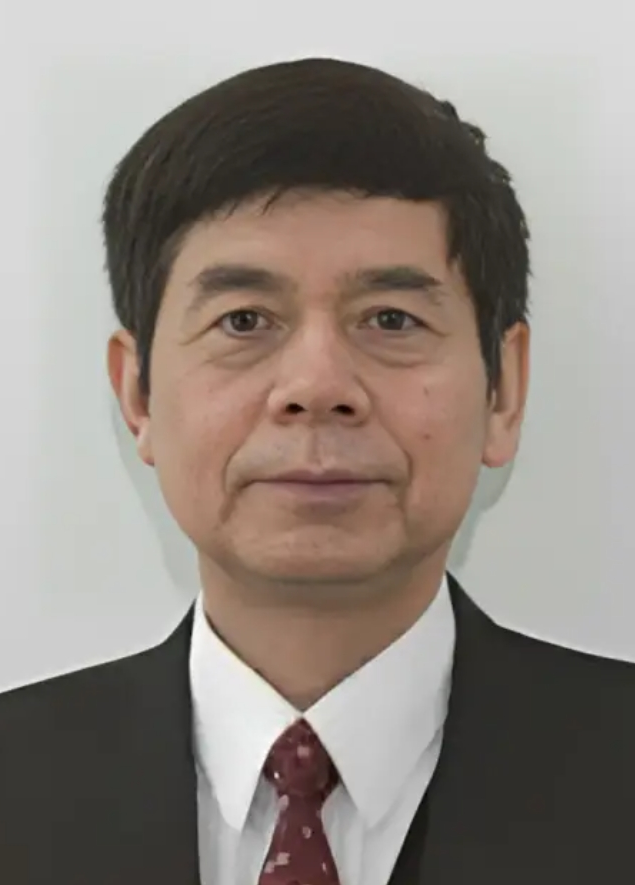 |
|||
| Zonglin Jiang | |||
| Institute of Mechanics, Chinese Academy of Sciences, China | |||
| Brief Biography: Zonglin Jiang is a professor from the Institute of Mechanics, Chinese Academy of Sciences and graduated from the Department of Mechanics, Peking University, and has engaged in gas dynamics research since then. Zonglin Jiang has won the AIAA 2016 Ground Test Award, received the a Distinguished Fellow of the International Shock Wave Institute in 2021, authored about 300 refereed papers and published two academic monographs, including "Gaseous Detonation Physics and Its Universal Framework Theory" by Springer and "Theories and Technologies of Hypersonic Shock Tunnels" by Cambridge University Press. |
|||
|
|
|||
| Speech Title: Critical Condition for Stable Oblique Detonation for Hypersonic Propulsion |
|||
| Abstract: Standing oblique detonation is a unique pressure-gain combustion phenomenon for hypersonic ramjet propulsion, and its research has been related with supersonic combustion in scramjet engines since its births, for example, absent treatment in its early stage and re-consideration in recent decades. Standing oblique detonations and supersonic combustion share the same features of supersonic chemically-reacting flows, and can be considered as different flow stages in its development. Combustion instability in a chemically-reacting flow is reviewed first to identify its fundamental mechanisms, and the upstream-propagating shock wave is identified as one of the most important intrinsic characteristics and taken as the key problem for developing hypersonic ramjet propulsion. Three critical conditions for the standing oblique detonation are proposed as a theoretical base for standing oblique detonation ramjet engines. The first critical condition is the maximum heat that can drive local flow states from supersonic to sonic after combustion. The second one is the critical inflow Mach number of combustors, at which supersonic combustion will transform from instable to stable at full equivalent ratio. The last is the critical wedge angle above which a standing oblique detonation can be initiated. The three critical conditions are discussed in detail and verified with numerical simulations and wind tunnel experiments. In conclusion, the stable operation of hypersonic ramjet propulsion is a critical issue to approach its engineering application, and the standing oblique detonation ramjet engine is recommended as a promising candidate, deserving more attention in the future. |
|||
| Keynote Speaker Ⅳ | |||
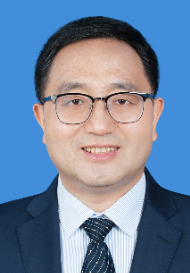 |
|||
| Jinglei Xu | |||
| Nanjing University of Aeronautics and Astronautics, China | |||
| Brief Biography: Prof. Jinglei Xu was born in 1971. He obtained his Bachelor, Master and Ph.D degree of Turbomachinery Engineering from Xi’an Jiaotong University in 1993, 1996 and 1999, separately. Then he joined Nanjing University of Aeronautics and Astronautics (NUAA), and served as professor from 2008 to present. Professor Xu is mainly engaged in the research of engine internal flow dynamics, advanced measurement technology of complex flow field, flow control and fluid thrust vector, etc. More than 170 scientific research papers have been published, including 100 international SCI retrieval periodical papers, and more than 40 papers at AIAA, ASME, ISABE and other important international conferences. He has applied for about 60 national invention patents and 50 authorizations. In 2019, Prof. Xu won the Second prize for national scientific and technological progress in China. |
|||
| Speech Title: On the Research Progress of Thrust Vector Technology |
|||
| Abstract: With the development of the aeronautic science and technology,Thrust vectoring technology, which can meet the performance requirements of future aircraft, such as unconventional mobility and agility, short-range/vertical takeoff and landing, supersonic cruise, etc., is one of the essential key technologies for future aircraft. Thrust vectoring nozzle is the core part of the thrust vectoring technology, and its performance determines the level of the engine technology. In this presentation, the importance and urgent requirement of thrust vector is introduced firstly; then the mechanical variable thrust vectoring nozzle and fixed-geometry fluidic thrust vectoring nozzle are compared; and then the main research developments about the typical types of the fluidic thrust vectoring nozzles are sumarized; Finally, the Bypass Dual Throat Nozzle (BDTN) developed by our group are focused and the main research progress are introduced in details. |
|||
| Keynote Speaker Ⅴ | |||
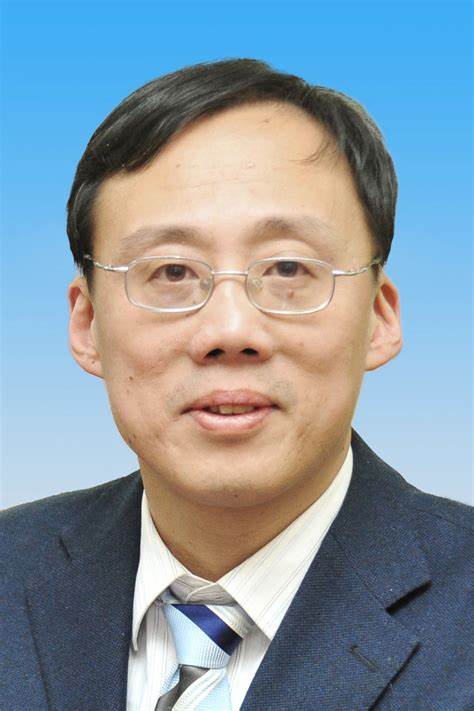 |
|||
| Guang Pan | |||
| Northwestern Polytechnical University, China | |||
| Brief Biography: 潘光,男,1969年3月生,博士,西北工业大学教授,博士生导师,长江学者,国家级教学名师,“百千万人才工程”国家级人选,享受政府特殊津贴专家,现任西北工业大学航海学院院长,“无人水下运载技术”工信部重点实验室主任,科技委某领域专家委员会副组长,某重点项目总设计师,国家重点研发计划首席科学家,国家一流本科专业“船舶与海洋工程”和国家一流本科课程“流体力学”负责人。先后获陕西省青年科技奖、陕西省教学名师、陕西省师德标兵、宝钢优秀教师特等奖提名奖等荣誉。长期从事水下无人系统设计、水动力学、水下武器发射与回收等方面的研究工作。先后主持国家重点研发计划、国家自然科学基金重点、国防基础科研计划等项目30余项。获国家技术发明二等奖2项,国家科技进步二等奖2项,军事技术发明一等奖1项,国防科技进步一等奖1项,陕西省技术发明一等奖2项,中国造船工程学会技术发明特等奖1项,授权发明专利30余项,出版专著2部,在JFM、POF、JFS、OE、力学学报、物理学报等期刊及会议上发表论文120余篇,SCI、EI检索60余篇。 |
|||
| Speech Title: 滑扑一体仿蝠鲼柔体潜水器技术及应用 |
|||
| Abstract: 当前我国海洋安全面临双重挑战:生态破坏引起岛礁面积锐减威胁领土主权、海峡要道被严密监控导致水下兵力前出受阻,亟需发展生物亲和、安静隐蔽、长时自持的新概念潜水器。西北工业大学潘光团队以具备高效滑翔、机动扑动、节能底栖等优点的蝠鲼为对象,国际首创滑翔-扑动-底栖多模态仿蝠鲼柔体潜水器概念,突破了“仿生动力学理论、滑扑一体游动、多模态运动控制、感知协同作业”等4大核心技术,研制了全球谱系最完整的仿蝠鲼潜水器,形成高机动、远航程、高亲和、高隐蔽、高抗扰、自主作业等6大类能力。报告聚焦多模态仿蝠鲼潜水器刚柔耦合动力学理论、仿生胸鳍扑动与可变翼滑翔一体化游动技术、滑扑多模态协调运动与抗扰控制技术、多源感知与集群协同作业技术等,论述了仿蝠鲼柔体潜水器最新技术进展和应用情况。 |
|||
| Keynote Speaker Ⅵ | |||
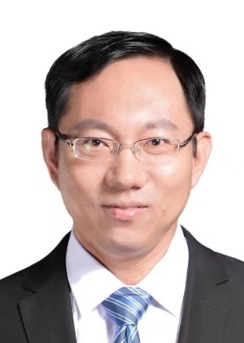 |
|||
| Bing Wang | |||
| Tsinghua University, China | |||
| Brief Biography: Professor Wang, Humboldt Scholar, Associate Dean of the Institute for Aero Engine, Tsinghua University, Director of the Spray Combustion and Propulsion Laboratory. Professor Wang has a long experience in basic and engineering application researches in two-phase flows and reactive flows under extreme conditions. As either the principle investigator or a major participant, he has completed more than 40 major national engineering projects. He has published more than 160 papers in SCI indexed journals such as Progress of Aerospace Sciences, Journal of Fluid Mechanics, Combustion and Flame, Physics of Fluids, more than 70 conference papers, and is the co-inventor of more than 15 Chinese and international patents. He is the winner of multiple golden awards at world-class international invention exhibitions as the Beijing Municipal Award for Scientific Progress. He is currently an Associate Fellow of the AIAA. In 2019, he was awarded as the "TUM Ambassador" by the Technical University of Munich. |
|||
| Speech Title: Modeling Compressible Multiphase Interfacial and Reactive Flows in Aerospace Engineering |
|||
| Abstract: Recent advancements in aerospace technology have significantly increased the demand for hypersonic propulsion systems. In scramjets and detonation-based engines, the intricate interactions between fuel droplets and intense shock waves are critical for enhancing combustor thermal efficiency. This underscores the importance of understanding compressible multiphase interfacial and reactive flows to advance next-generation high-speed propulsion technologies. In recent years, we have developed and implemented a comprehensive suite of high-fidelity numerical strategies—incorporating adaptive mesh refinement, immersed boundary methods, high-order reconstruction schemes, interface-tracking techniques, as well as detailed chemistry and phase transition models—to accurately resolve the coupled evolution phenomena and mechanisms associated with shock waves and detonation dynamics involving Eulerian droplets. Through systematic simulations of both planar and curved shock impacts, along with cellular detonation environments, we elucidate the evolution of transient wave configurations, quantify the onset and growth of interface instabilities, and characterize regimes related to droplet flattening, ligament formation, and fragmentation. Our findings reveal that multidimensional shock structures not only modulate the local thermochemical state surrounding each droplet but also generate complex vortex-driven shear due to surface pit formations that accelerate droplet breakup far beyond classical Weber-number predictions. These insights provide a robust mechanistic foundation for designing next-generation hypersonic vehicles with enhanced atomization capabilities, improved mixing efficiency, and superior ignition performance. |
|||
| Keynote Speaker Ⅶ | |||
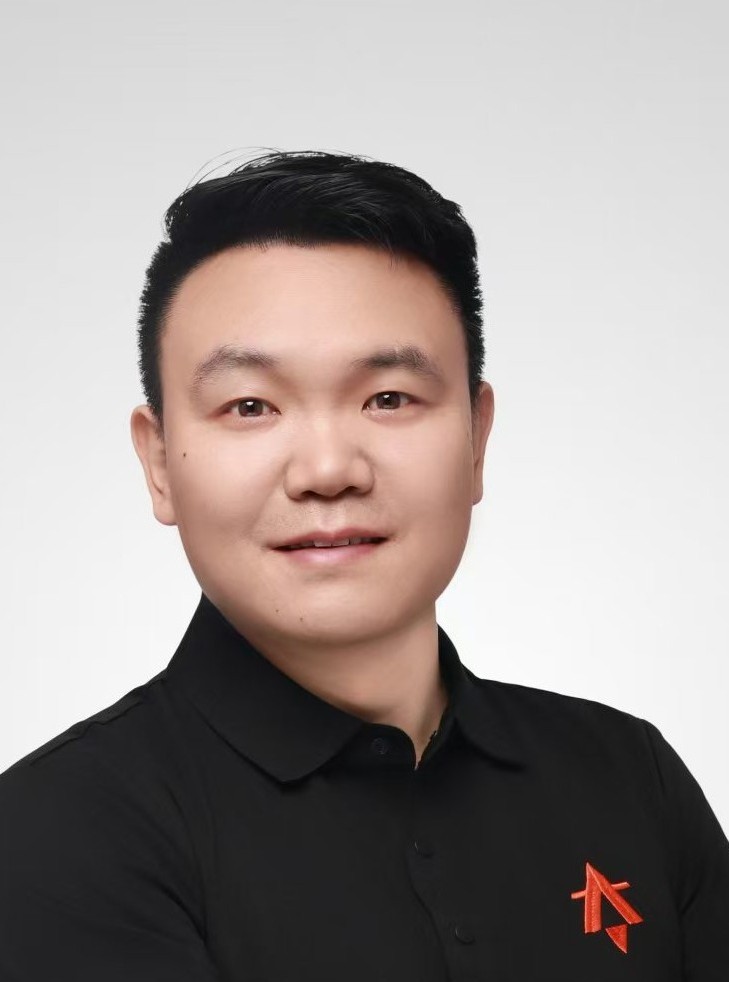 |
|||
| Shuguang Chen | |||
| Shanghai Cosmoleap Aerospace Science and Technology Co., Ltd., China | |||
| Brief Biography: Mr. Chen Shuguang is the chairman of the Shanghai Cosmoleap Aerospace Science and Technology Co., Ltd. He has been working in this industry for 13 years, he was the deputy general manager of a top-tier Chinese company in this field, the first successful Vertical Takeoff Vertical Landing Rocket in China has been achieved by his team. As the founder of Cosmoleap, he is leading the company in developing a Reusable Commercial Launch Vehicle, which is named as YQ-1 rocket, powered by liquid oxygen and methane. The YQ-1 rocket boasts a diameter of 4.2 meters and a lift-off mass of approximately 550 tons, its first stage can be recovered along its flight path utilizing the recovery tower. Under his leadership, Cosmoleap is resolutely advancing toward its vision of becoming the world's premier space transportation service provider. |
|||
| Speech Title: Research Progress and Development Direction for Ground-Based Capture Reusable Launch Vehicles |
|||
| Abstract: Reusable launch vehicles represent a crucial pathway to achieve large-scale, low-cost access to space. The vertical takeoff and vertical landing (VTVL) reuse model has already been successfully commercialized. Reusability brings rockets back to their fundamental purpose of transportation, and with generational advantages in low cost, high frequency launch and high reliability, reusable launch vehicles have rapidly become the mainstream in the international space launch market. The first step toward reusability involves intact recovery of the first-stage rocket. Ground-based capture represents a recovery method characterized by long buffer distances, minimal braking force, low rocket overload and impact, offering greater reliability and cost-effectiveness. Based on the progress of Chinese first tower-based rocket recovery, this report explores the development needs and trends of commercial rockets. |
|||
| Keynote Speaker Ⅷ | |||
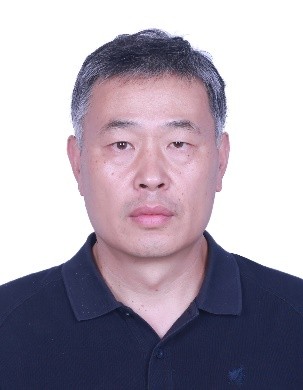 |
|||
| Shipeng Li | |||
| Beijing Institute of Technology, China | |||
|
Brief Biography: Now hosting characteristics prediction of the hot gas injected into water program supported by the NSFC and the other foundations from MOE and enterprises. The key points of the program is to probe the behavior of the jet exhaust and the influence to the vehicles/environments. |
|||
| Speech Title: Design and Numeric Simulation on the Solid Propellant Microthruster for Cubesat |
|||
| Abstract: The solid propellant microthruster is definitely a new class of micropropulsion system for the future microspacecraft, such as pico/nano-satellite and cubesat etc. It presents many advantages over other propulsion systems such as lesss system complexity, easy to controlling, no moving parts, and no propellant leakage possibility. The miniature of the system is not simply reductions in size, manufacture and capability of the normal size one.The matrix arranged solid propellant microthruster is a feasible way to overcome the one-shot limitation of it and has been used in many applications such as interception missiles, KKVs etc. The fire test of a standalone prototype microthruster was conducted to validate the numerical simulation conclusion. The theoretical specific impulse of the propellant was 255s. The efficiency, as well as matching capability between the ignitor and the main charge, was 84.3% calculated from the F-t curve. The size of the microthruster mainly affects the flow fields, heat transfer process between gas and nozzle cases, thus causes great loses of the microthruster’s efficiency. |
|||
| Keynote Speaker Ⅸ | |||
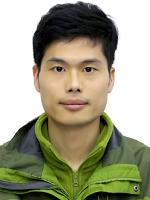 |
|||
| Ping'an Liu | |||
| Harbin Engineering University, China | |||
| Brief Biography: Ping'an Liu is a professor at the College of Aerospace and Civil Engineering at the Harbin Engineering University (HEU). He received his PhD in mechanics in 2012 at Harbin Engineering University, China. His research is primarily focused on combustion and flow processes in solid rocket motors and water ramjet engines, metal fuel technology, underwater supercavitating vehicles and transmedia technology. He is an Associate Editor of Journal of Energy Science and Technology. Currently, he is also the deputy director of the Key Laboratory of Vehicle Transmedia Technology of the Ministry of Industry and Information Technology. He has published around 80 peer reviewed journal papers. He serves as the co-chair of the organizing committee of the 2025 International Conference of Mechanical Engineering on Aerospace (CoMEA). |
|||
| Speech Title: Progress in Metal-Fueled Transmedia Engine Research and Future Emerging Power Systems |
|||
| Abstract: The metal-fueled engine is attractive in aerospace and underwater propulsion because of its rather successful combination of such characteristics as high combustion heat, density, safety of powder handling, non-toxic combustion products, and price. However, to realize these advantages, metal-fueled propellants are required to have good delivery characteristics and stable, efficient combustion. These key technologies remain a major challenge in the development of metal-fueled engines. This presentation focuses on the present development of metal-fueled engine technology and its application in transmedia vehicle, specifically covering numerical modeling of the flow field in the engine and recent experimental studies. Finally, several novel power systems with high potential for future applications in launch and transmedia vehicles are introduced. |
|||
